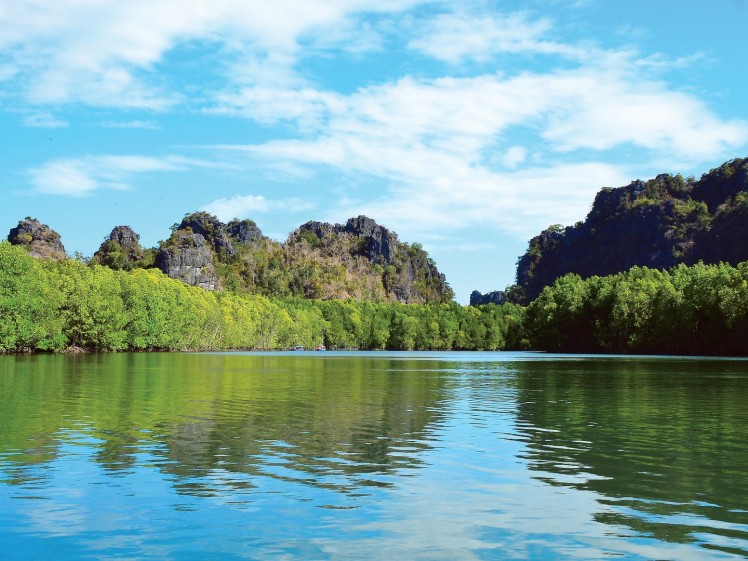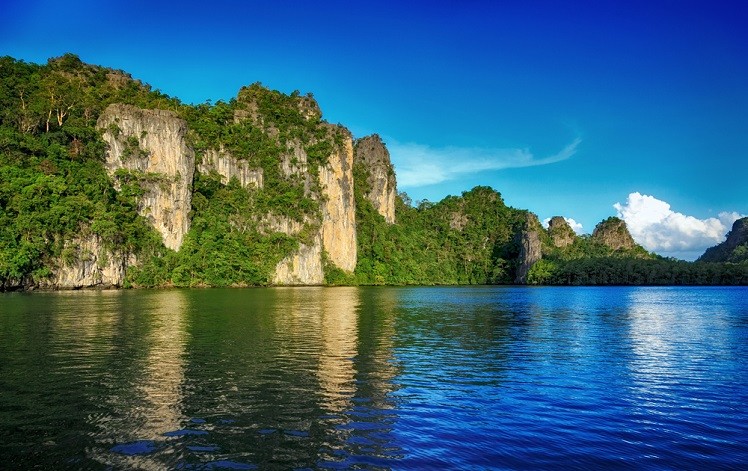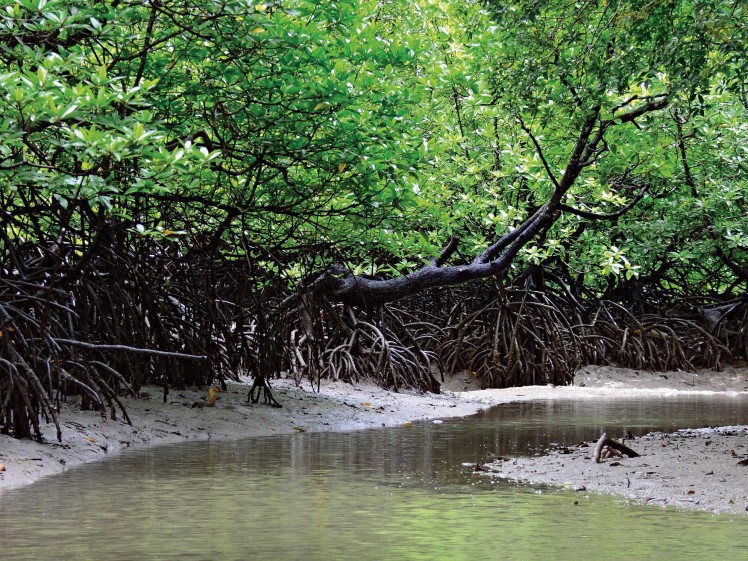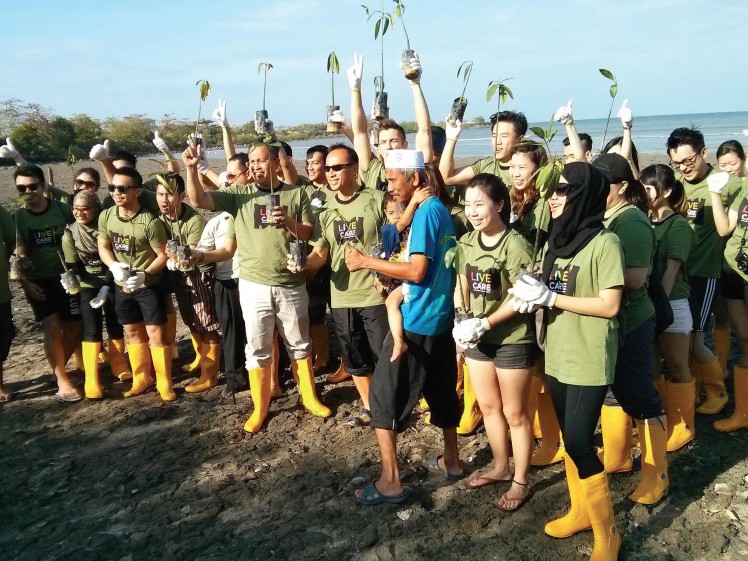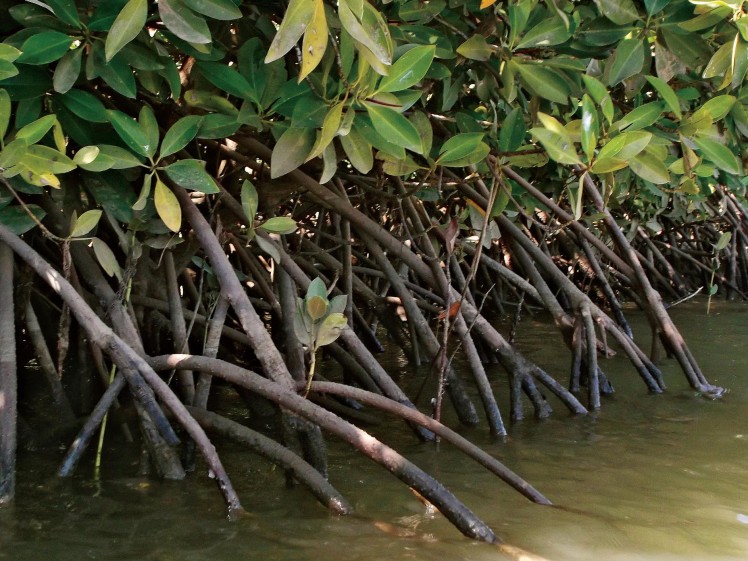These curious trees, with their uncanny ability to thrive in saline environments, are finally being recognised for the myriad benefits they offer and the protection they provide. Group Editor Chad Merchant visits Langkawi’s coasts and finds that mangroves are more than just beneficial… They’re critical.
It’s a date that will not soon be erased from human memory. On December 26, 2004, a massive undersea earthquake set into motion one of the most devastating natural disasters in recorded history. The Indian Ocean Tsunami, born from the 9.1-magnitude quake off the northwest coast of Sumatra, swept through the region with unimaginable power.
Malaysia, largely shielded by the enormous land mass of Sumatra, escaped the sheer destruction suffered by Indonesia, Sri Lanka, India, and Thailand. Still, though, the damage was significant.
Penang and Langkawi absorbed the brunt of the tsunami’s effect on Malaysia. In Langkawi, the mangrove-populated coastline of Kuala Teriang prevented the wave from wreaking far more damage than it did. But there was a cost: the mangroves were all but obliterated, some in the initial disaster, others succumbing in the months that followed.
Today, the coast is nothing but barren mudflats, and if another tsunami were to strike, with nothing to protect the coastal villages, the destruction would be far, far worse.
A Coastline’s Best Friend
This coastal protection is just one of the benefits mangroves provide, certainly the most easily apparent and obvious one. The mangroves serve as a buffer zone, a transition from the sea to the land, and act as a coastal defence barrier.
As a result of their often densely entangled above-ground root systems, mangrove communities protect shorelines during storms by absorbing wave energy and reducing and dissipating the velocity of water as it passes through the root barrier, particularly the destructive force of tidal waves and tsunamis. Additionally, mangroves protect inter-tidal sediment along coastlines from eroding away in periods of stormy weather and strong waves. The protection offered is not insignificant.
According to a study conducted by The World Conservation Union, healthy mangroves incontrovertibly serve as a natural barrier against massive waves. The study compared the death toll from two villages in Sri Lanka that were hit by the devastating Indian Ocean tsunami in 2004. Two people died in the settlement with dense mangrove and scrub forest, while as many as 6,000 people died in the village without such vegetation.
Apart from that, however, mangroves provide a sanctuary for a wide array of life. Mangroves provide spawning and nursery habitats for many wildlife species, including commercial fish and crustaceans, and thus contribute to sustaining the local abundance of fish and shellfish populations. In fact, here in Malaysia, nearly 120 species have been recorded as being directly associated with mangrove ecosystems. Apart from aquatic species, numerous bird species also utilise mangroves as rookeries or nesting areas, and many migratory species depend on mangroves for part of their annual migrations.
Another benefit mangroves offer is an economically tangible one: the wood from mangroves is also used for building houses, furniture, and telephone poles, as well as certain household items. When these activities are managed sustainably, it is possible to derive timber products from mangrove forests without significant environmental impact, while still maintaining the mangrove forest’s value as a nursery and a source of food for commercial capture fisheries.
An Ancient Land, A Haven For Life
In Malaysia, mangroves play a crucial role in coastal life, as much so on parts of its mainland as on its islands. In Langkawi, a designated UNESCO Geopark since 2007, mangroves are a uniquely visible part of the scenery, though the 99-island Langkawi archipelago is a geopark for other reasons, too. The collection of islands here showcases the best exposed and most complete Palaeozoic sedimentary sequence in Malaysia, from the Cambrian to the Permian period, with much of the rock initially formed some 550 million years ago.
What can be seen in Langkawi today is the combined result of these ancient geological processes and the ongoing weathering and eroding process that has taken place since the land was brought to the surface around 220 million years ago. Geodiversity and biodiversity are protected in three areas which collectively comprise the UNESCO Langkawi Geopark: Machinchang Cambrian Geoforest Park, Kilim Karst Geoforest Park, and Dayang Bunting Marble Geoforest Park.
These protected geoforest parks also preserve biodiversity in a number of habitats including mangroves, tidal flats, beaches, estuaries, coral reefs, and limestone caves. The mangroves are a key element in the Kilim Karst Geoforest Park, and a number of local boaters operate tours that set out daily from the nearby jetty. One of the most knowledgeable guides is the resident naturalist at the nearby Four Seasons Resort, Aidi Abdullah, who regularly takes guests at the resort on informational boat tours of the densely tangled and life-rich mangrove forests in the Kilim Karst Geoforest Park, then offers a hands-on educational experience back at the resort’s Geopark Discovery Centre.
Building Awareness, Rebuilding A Shoreline
The Four Seasons isn’t the only resort recognising the critically important role mangroves play in Langkawi’s fragile ecosystem. The significance of mangrove forests to the natural environment and its surrounding coastal communities inspired Berjaya Hotels and Resorts’ efforts to not only raise awareness on mangrove conservation, but to take action. The three-day Mangrove 4 Life (M4L) campaign was a joint initiative involving Berjaya Langkawi Resort, the Institute of Foresters Malaysia, the Malaysian Nature Society, and the villagers of Kampung Kuala Melaka, Kuala Teriang.
Throughout the event weekend in Langkawi, media members and young Malaysians performing their national service planted well over 400 young mangrove saplings on the coastal shoreline of Kampung Kuala Melaka, Kuala Teriang where the Boxing Day Tsunami hit over a decade ago. As one of the important species used in replanting mangroves for conservation and protecting coastlines, the Rhizophora mucronata mangrove species was chosen for planting, due to its fast-growing nature and ability to flower within its first year of planting.
Led by personnel from the Malaysian Nature Society, the volunteers first encased six-foot high PVC tubes into the mudflats to form a wave breaker stretch, thus protecting the M4L mangrove planting site. This stretch of tubes will lessen the impact of waves on the saplings and ensure a higher chance of survival and growth for these trees. Continuing their efforts in the thick, dark mud, these intrepid mangrove warriors then planted hundreds of the tree saplings in the hopes that in the not-too-distant future, this barren coastline will once again be protected.
“Mangrove habitats and ecosystems are of utmost environmental importance for a whole range of reasons,” said Andrew J. Sebastian, Head of Communications of the Malaysian Nature Society, who was actively involved throughout the weekend event. “They store and cycle nutrients, filter pollutants, protect shorelines from erosion and storms, and play a vital role in modulating climate as they are a major carbon sink and oxygen source, and, in addition, sustain livelihoods of coastal communities. With this new project, it is our great hope that we can restore balance to the ecosystem of the area and contribute to conserving these functions that benefit the environment.”
In addition to undertaking mangrove planting to help protect the barren coastline at the tsunami-hit site on the island, M4L’s emphasis included bringing the local community together to learn about and plant mangroves together as a team. The passion for this project was shared with 48 students aged 10 to 12 from the local school, Sekolah Kebangsaan Kuala Teriang.
Conducted by Dr Evelyn Lim, the Honorary Secretary for Ecotourism and Conservation of Malaysian Nature Society and co-facilitated by the media, the Mangrove Awareness Workshop for the schoolchildren fostered awareness on the importance of mangroves and conserving them through interactive and fun-filled learning activities. Following this session, the students were also involved in a tree planting session where an additional 98 mangrove saplings were planted at Berjaya Langkawi Resort’s mangrove site.
As the understanding of the contributions and importance of mangroves grows, not just in Malaysia but throughout the world, it is hoped that more actions aimed at education, conservation, and protection will flourish. Tsunamis, tidal erosion, over-fishing, and global warming are all serious threats mankind will continue to face in the future. The humble mangrove offers a helping hand to address them all.
This article was originally published in Senses of Malaysia magazine which is available via a free subscription.
"ExpatGo welcomes and encourages comments, input, and divergent opinions. However, we kindly request that you use suitable language in your comments, and refrain from any sort of personal attack, hate speech, or disparaging rhetoric. Comments not in line with this are subject to removal from the site. "



